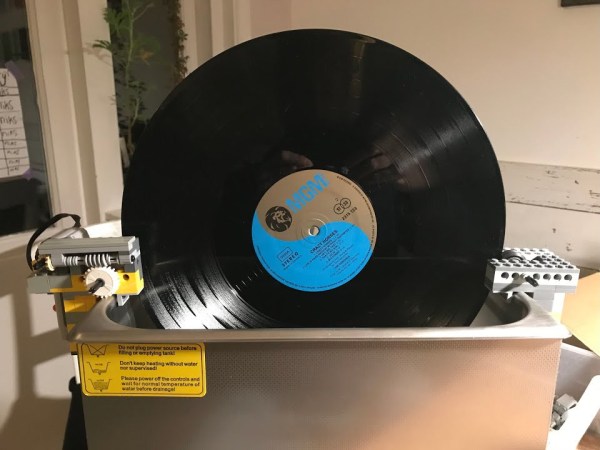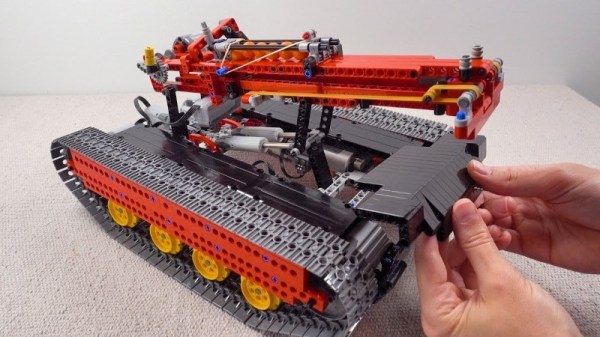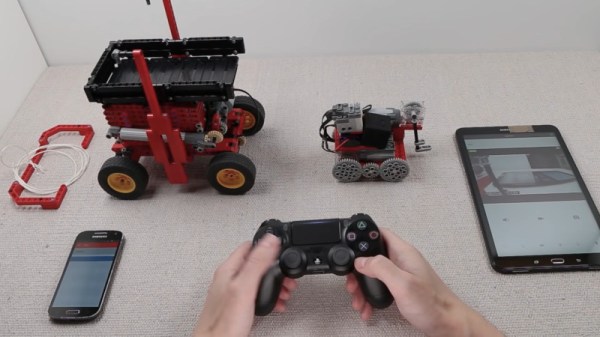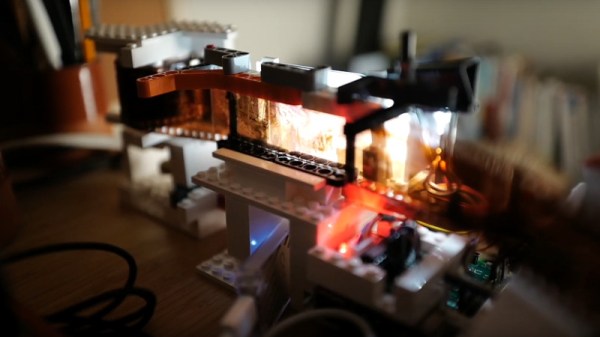There are many schools of thought when it comes to keeping vinyl records clean. It’s a ritual that’s nearly as important as the one that comes after it — queuing up the record and lowering the needle. We’ve seen people use everything from Windex and microfiber towels to ultrasonic cleaning machines that cost hundreds or even thousands. In the midst of building a beefier ultrasonic record cleaner and waiting for parts, [Baserolokus] looked around at all the LEGO around the house and decided to build a plastic prototype in the interim.
The idea behind ultrasonic cleaning is simple — high-frequency sound waves pumped through distilled water produce tons of tiny bubbles. These bubbles gently knock all the dirt and grime out of the grooves without using any brushes, rags, or harsh cleaners. [Baserolokus] built two pieces that hang on the edge of a washtub. On one side, a Technic motor spins the record at just under one RPM, it spins against a 3D printer wheel embedded in the other side. Check it out in action after the break.
Cleaning your vinyl is a great first step, but you might be ruining your records with a sub-par turntable. Take a deep dive with [Jenny List]’s thorough primer on the subject.


















